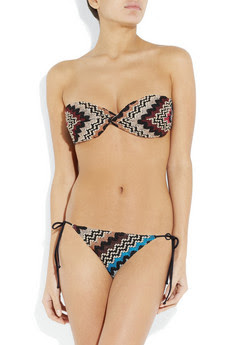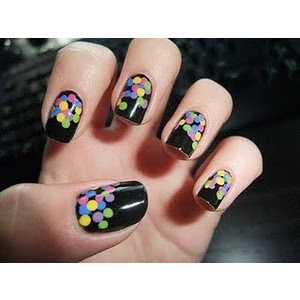But 50 years later the Afro still has a bad rep. People don't see the beauty and simplicity in it. Its a sensual and beautiful hair style.
But the Afro was also a political statement during the 1960s, and perhaps this is why the bad rep has stayed so long.
The Afro became more than a hairstyle or fashion trend but a political statement that allowed black people to express their cultural and historical identity. The hairstyle emerged out of the Black Power movement, which rejected Dr. Martin Luther King's emphasis on non-violence as a form of political struggle, but instead embraced the idea of progressive defense (ie. If you someone attacks you, you should be prepared to defend yourself).
However the media at the time demonized the Black Power movement, claiming it endorsed violence for the sake of violence, which was wholly untrue. The Black Power movement was about DEFENDING YOURSELF and enjoying the freedoms you are entitled to.
The Black Power Movement, both politically and culturally, offered black people greater expression that moved away from the subservience of their forebears. Natural hairstyles were considered offensive and therefore many black people during the 1950s would process, perm or conk their hairs to attain a texture that was similar to or mimicked white hair. Wigs were also popular among black women.
Only members of the Nation of Islam (people like civil rights leader Malcolm X) rejected processing and straightening, believing that to do so was to embrace notions of white superiority and that the natural attributes of black people were unattractive. Some of the Muslims still wore their hair in short and neat hairstyles, but it kickstarted the movement towards embracing the Afro for its natural beauty.
But by the late 1960s the civil rights movement and political protests had given way to the Black Power Movement, more young African Americans stopped processing their hair and allowed it to grow out naturally, affecting a halo-shaped hairstyle which was dubbed the Afro.
In the beginning, the Afro was not popular in the black community, particularly among older black people who were still driven by older values that the young people were rejecting. By the 1970s the hairstyle grew more prominent as people such as Stokely Carmichael and members of the Black Panthers began wearing the hairstyle. Women, such as feminist Angela Davis, whose Afro was a famous image of the late sixties and early seventies, let their hair grow out as well, fashioning them in large naturals or in Afro puffs (two ponytails tied together by ribbons).
But one person who would make the Afro more acceptable was musician James Brown. Throughout most of Brown's early career he conked his hair, but by the time he recorded "(Say It Loud) I'm Black and I'm Proud" Brown let his hair grow out naturally as a statement of Black pride and self-sufficiency. His song and the Afro came to define Black America during the 1960s fashions and became a political and cultural statement.
 Next lets flash forward to 2012...
Next lets flash forward to 2012...I hate to be a spoilsport, but I don’t see anything fabulous about Vogue’s Black Allure shoot.
In the unlikely case that you have missed it, their latest gimmick is using hair styles and fashions from the 1920s to 1950s... periods when black people were enticed to conk their hair to look more like white people.
There has already been a lot of criticism the Vogue editorial has received, mostly on the topic of segregation since Vogue likes to include the occasional Asian or black issue of the magazine and then 99% of the time forget that non-white people exist. That criticism is certainly valid and worth saying.
 When Vogue first did a black issue in 2008 it sold like hot cakes. People went crazy buying them and so it makes sense that Vogue would try to repeat that simply for the sake of profits... but why make it a rarity? Why not just include more articles for EVERYONE on a regular basis?
When Vogue first did a black issue in 2008 it sold like hot cakes. People went crazy buying them and so it makes sense that Vogue would try to repeat that simply for the sake of profits... but why make it a rarity? Why not just include more articles for EVERYONE on a regular basis?Vogue’s editor, Franca Sozzani, may argue and try to convince us that this was a politically conscious decision. But Sozzani knows he is running a business, not a charity. He is thinking about free buzz and sales.
My criticism is more worried about black and other so-called minority women that are so often greatly excluded from the western high-market fashion industry.
Although to be fair who really wants the white standard fashion model which is based on starvation, submission and exploitation just to be considered as something fashionable?
 And so when a VOGUE editorial wants to think of oldie goldie times when black people were emancipated but still treated like second class citizens I seriously question his morality. And what is he really promoting? Black people styling their hair to look like white people? Hmm. Or does he just hate the Afro?
And so when a VOGUE editorial wants to think of oldie goldie times when black people were emancipated but still treated like second class citizens I seriously question his morality. And what is he really promoting? Black people styling their hair to look like white people? Hmm. Or does he just hate the Afro?Do we really need photos of black women who are starved, submissive and exploited? I think not.
Women need to be empowered, proud and their hair styles should reflect that.
There may be other fashion blogs which have touched on these topics but I was unable to find one. Sad really. The Black Allure spread and the video looks like it could be an ad for a brothel.
And there is nothing empowering about black women being depicted as prostitutes.
It makes you realize that feminism and equality really needs more focus and attention in the fashion industry.
It’s not all doom and gloom however because there are many brands which embrace empowerment of women. Nike shoes for example. Nike is pretty smart about this too... they market to everyone.
After all do you really want to be marketed to as a separate ethnic group and then placed in a stereotype? Or do you want to be able to make your own choices?
Post-Feminism (the belief that all women have a choice) says that in order for women to make choices they need to know all their options. When choosing fashion or hair styles we need those options so we can show who we really are on the outside.
Telling women they should wear hair styles from the 1920s isn't a choice. Its not even a trend or a fad. Sure, its nice to look at and its nice to have that option, but where is the Afros?
Think about it. Why did Vogue only pick hair styles from the 1920s to 1950s? Its because the 1960s meant Afros and they didn't want to get into that topic. They want to steer women away from the option.
But I say they're wrong.
In the 21st century we now have white women and asian women getting afro-style perms. They're doing it as a fashion statement and because they've recognized its beautiful. Because it is beautiful.









































.jpg)
